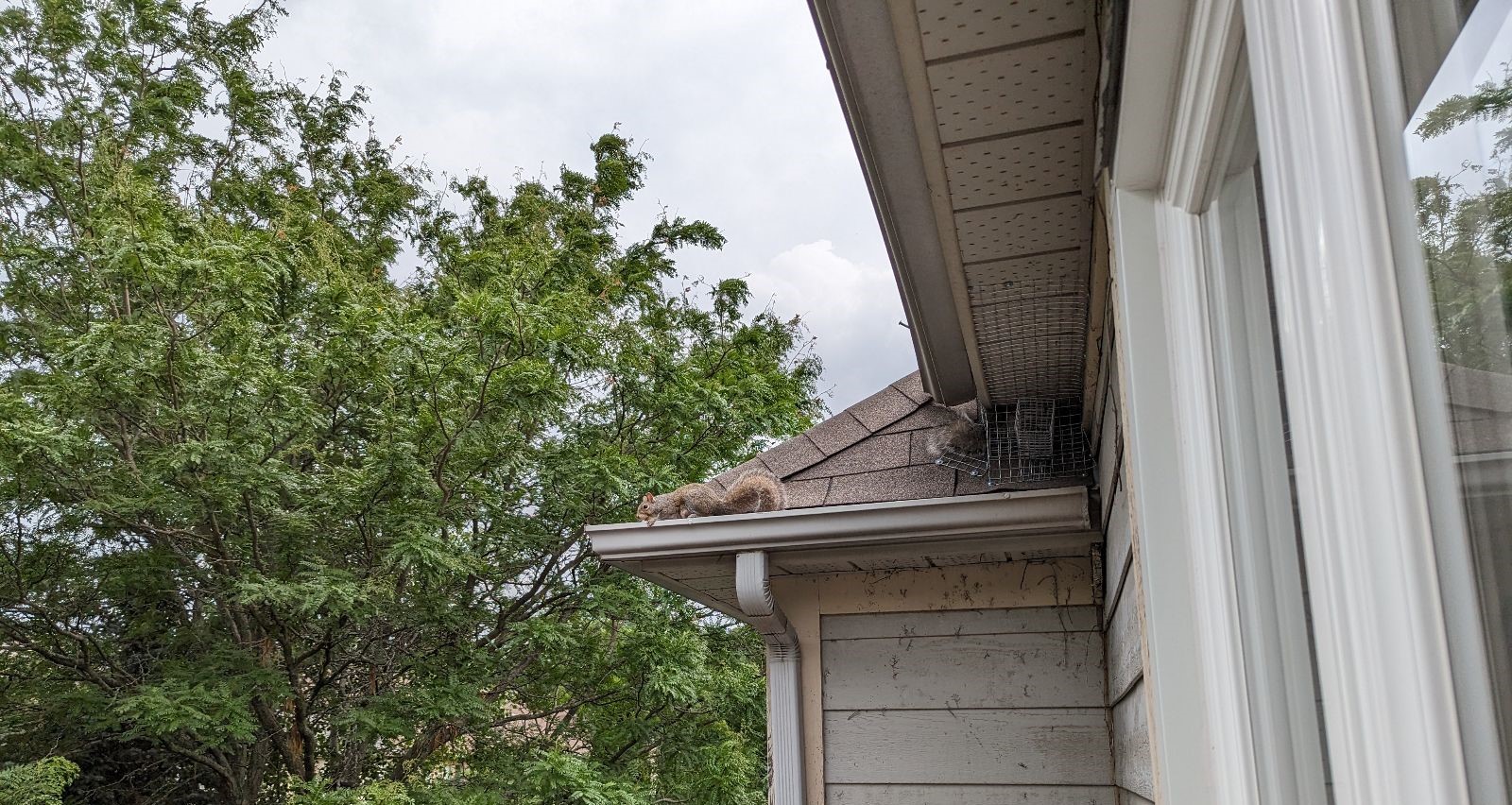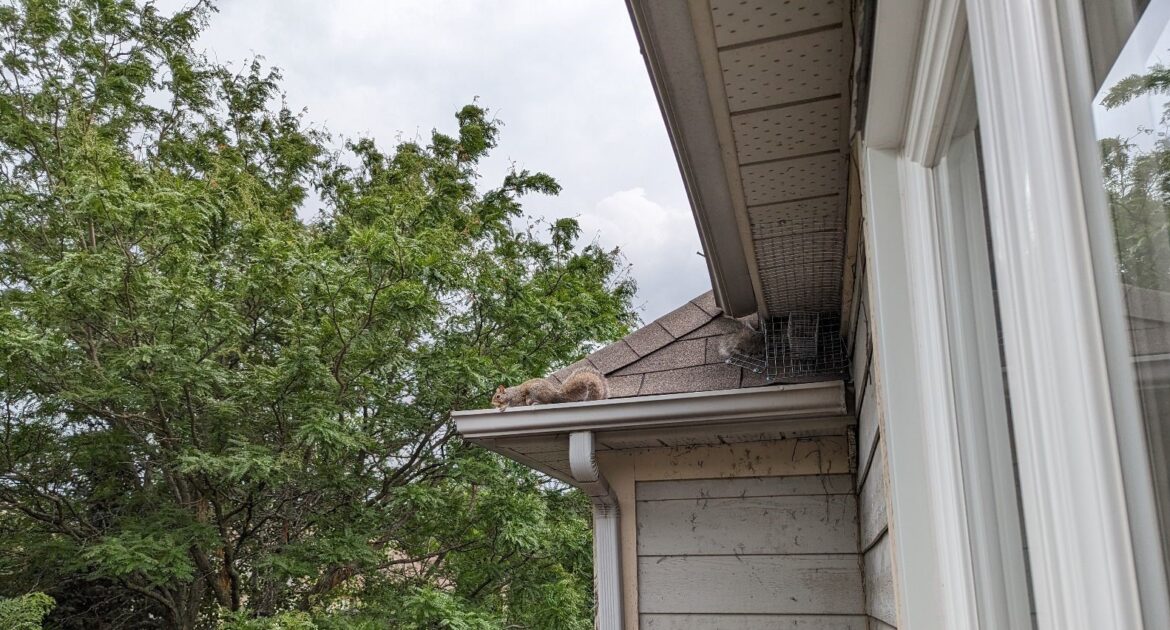Squirrels are among the most commonly seen wildlife in Atlanta residential areas. These small mammals often delight us with their acrobatics and fluffy tails. However, they face numerous threats in the wild. There are various birds of prey and ground-based predators that post threats to squirrels.
For homeowners, understanding the predators and defense mechanisms of squirrels can offer insights into why these animals sometimes take refuge in our homes. This article dives deep into the world of squirrel survival, shedding light on how they stay safe from threats and why they might end up in your attic or walls. We’ll also discuss humane wildlife control in East Cobb and how Skedaddle can help ensure your home remains safe and squirrel-free.
The Role of Predators in Squirrel Behavior
Predators play a significant role in shaping squirrel behavior. Birds of prey like hawks and owls, along with ground-based predators such as foxes and snakes, all pose threats to squirrels. These predators force squirrels to stay alert and develop keen survival tactics. A squirrel’s primary defense against predators is its agility and speed. They can make rapid, unpredictable movements and leap vast distances between trees. This natural agility helps them avoid becoming easy targets.
Another fascinating behavior driven by the presence of predators is their feeding patterns. Squirrels often change their feeding spots frequently to avoid being consistently tracked by predators. They also have the unique habit of pretending to bury food to mislead potential thieves. This tactic shows how the constant threat of predators influences even their feeding habits.
Understanding these behaviors can help homeowners appreciate why squirrels might sometimes behave erratically or choose to take refuge in safer, enclosed spaces like attics or garages. When they’re not outwitting predators, squirrels are incredibly strategic about their survival, which sometimes brings them uncomfortably close to human habitats.
How Squirrels Use Camouflage and Habitat
Camouflage is another essential defense mechanism for squirrels. Their fur color often blends well with the environment, making it difficult for predators to spot them. In wooded areas, their brown and gray fur can make them nearly invisible among tree bark and foliage. During winter, some species’ fur will even lighten to blend with snowy environments better.
Squirrels also choose their habitats carefully to maximize their chances of survival. They prefer areas with dense tree cover, which offer not only food sources but also numerous escape routes. Tree cavities and nests, known as dreys, provide safe places for squirrels to raise their young and hide from predators. These natural shelters are crucial for their survival.
However, urbanization has reduced the availability of such habitats. This shortage of natural shelters often forces squirrels to seek refuge in buildings, attics, and garages. Homeowners may find these creatures nesting in their properties, which can lead to various complications. By understanding the reasons behind this behavior, we can better appreciate the importance of humane removal methods and habitat restoration.
Alarm Calls and Social Behavior
Squirrels are highly vocal animals, and their alarm calls play a vital role in their survival. These high-pitched sounds alert other squirrels to the presence of predators. There are different calls for various threats; for example, a sharp “kuk” sound might indicate an aerial predator, while a series of “quaa” calls could signal a ground threat. These alarm calls demonstrate how squirrels rely on social behavior to stay safe.
In addition to vocal alarms, squirrels communicate through tail signals. A flick of the tail can indicate danger, while other tail movements can communicate different messages within their social groups. This intricate communication system enhances their ability to survive in environments filled with predators.
Social behavior extends beyond immediate threats. Squirrels often engage in grooming and food-sharing within their family units, strengthening social bonds and cooperation. These behaviors contribute to their overall survival, showcasing the importance of community in the animal kingdom.
Understanding these social behaviors can help homeowners recognize the complexity of squirrel societies. When these animals invade human spaces, it’s often because their natural habitats and social structures have been disrupted. Humane eviction and exclusion methods can help restore balance without causing harm to these intelligent creatures.
The Importance of Food Storage
Food storage is a critical survival strategy for squirrels. They gather and bury nuts, seeds, and other food items to sustain themselves through harsh seasons when food is scarce. This behavior, known as caching, is a testament to their foresight and planning abilities. However, it also makes them targets for other animals looking to steal their stored food.
Squirrels have developed methods to protect their caches from being raided. One such tactic is the “deceptive caching” mentioned earlier, where they pretend to bury food to throw off potential thieves. They also remember the locations of their caches using spatial memory, which helps them retrieve food when needed.
The need to store food can sometimes lead squirrels to invade human properties. Attics and garages provide dry, safe spaces to hide their caches. This behavior underscores the necessity of securing homes against wildlife intrusion, especially during fall when squirrels are actively gathering food for winter.
By understanding the importance of food storage in squirrel survival, homeowners can take proactive steps to prevent these animals from turning their properties into storage sites. Humane exclusion techniques and proper home maintenance can deter squirrels from seeking refuge indoors.
Choosing Skedaddle for Humane Wildlife Control in East Cobb
When faced with a squirrel invasion, it’s essential to choose a wildlife control service that prioritizes humane and effective methods. Skedaddle stands out for its commitment to ethical wildlife control practices. Unlike traditional pest control methods that rely on trapping and relocating, Skedaddle uses exclusion techniques that prevent animals from re-entering once they’ve left.
Skedaddle’s approach begins with a thorough inspection of your property to identify entry points and potential nesting sites. Their experienced technicians then use one-way doors and exclusion barriers to allow squirrels to leave but not re-enter. This method ensures that the animals are safely removed without causing harm.
Additionally, Skedaddle offers cleaning and decontamination services to address any damage caused by the wildlife. This comprehensive approach not only removes the current problem but also prevents future invasions. By choosing Skedaddle, homeowners can rest assured that their homes will be squirrel-free while respecting the animals’ right to live and thrive in their natural habitats.
Skedaddle places a strong emphasis on education, empowering homeowners with knowledge regarding local wildlife habits and prevention strategies. By helping clients understand the behavior and needs of squirrels and other wildlife, Skedaddle fosters a community-oriented approach that not only addresses current problems but also promotes long-term coexistence. Their commitment to sustainable practices and their extensive expertise in wildlife management truly set Skedaddle apart as a reliable partner in safeguarding your home from unwelcome guests while valuing the natural ecosystem.
Secure Your Home with Skedaddle
Squirrels are remarkable creatures with a range of predators and defense mechanisms that have evolved to help them survive. From the agility and speed that allow them to escape danger to the social behaviors that enhance their safety, squirrels constantly adapt to their environments. Unfortunately, urbanization and habitat loss often force them to seek refuge in human homes. Understanding these behaviors can help homeowners take proactive steps to prevent invasions.
If you find yourself facing a squirrel problem, remember that humane wildlife control methods are the best solution. Skedaddle’s ethical approach ensures that these animals are removed without harm, and your home remains secure. Contact Skedaddle today to learn more about their services and how they can help keep your home squirrel-free in a humane and effective manner.




